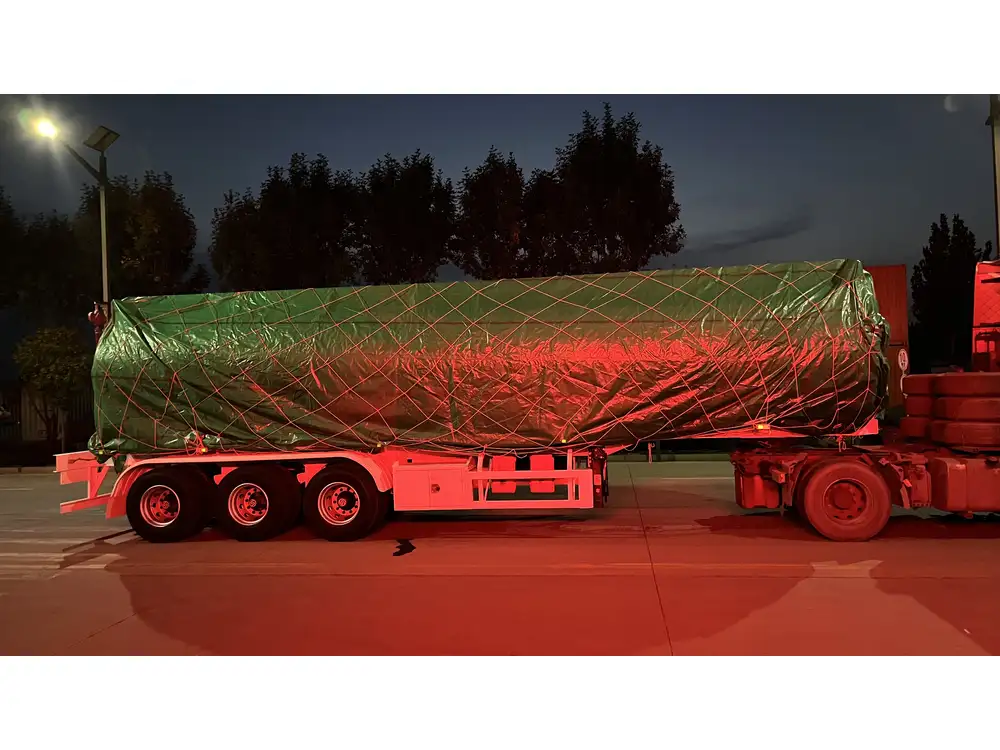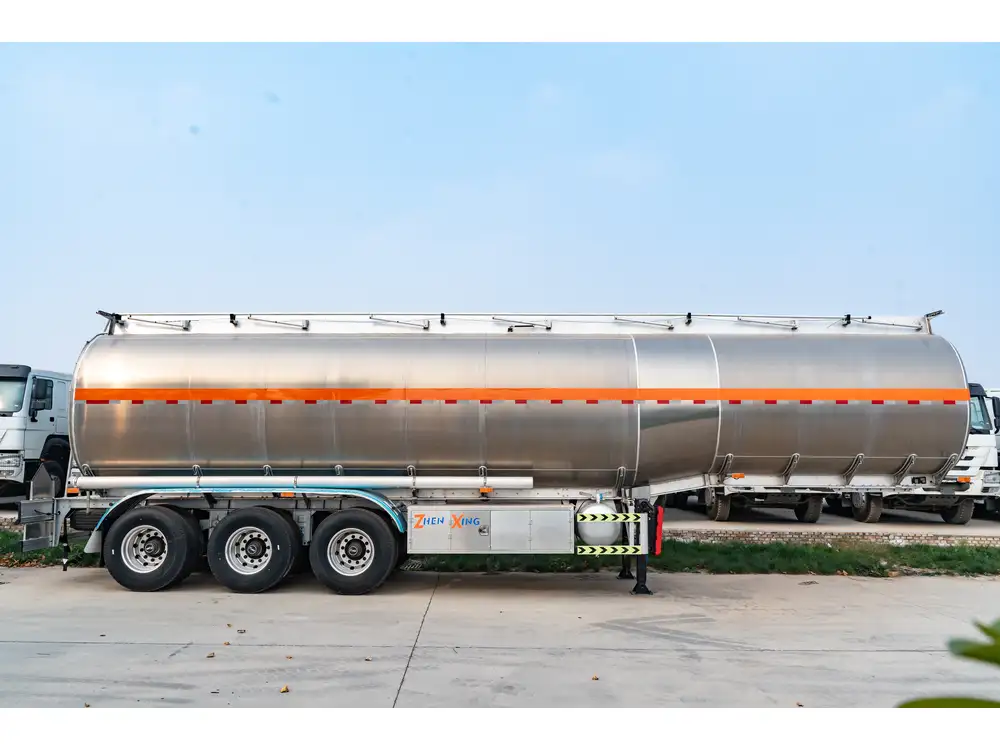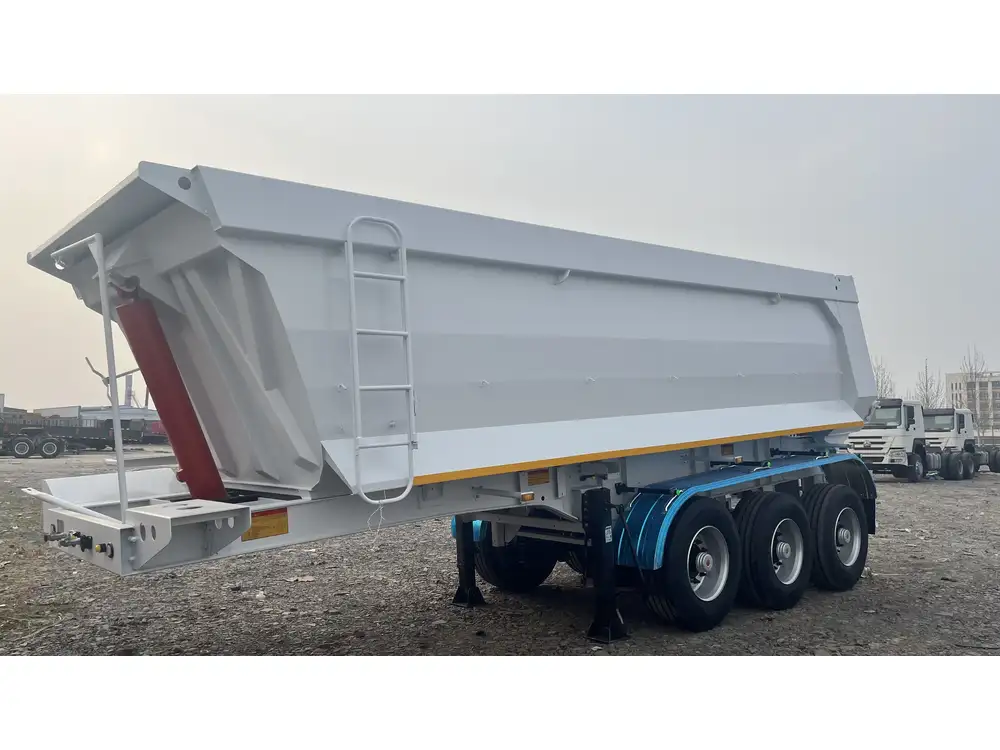Dump trailers play a crucial role in various industries, serving as versatile tools for transporting materials and waste. However, like any other piece of machinery, their value diminishes over time due to depreciation. Understanding how depreciation works for dump trailers is essential for manufacturers, buyers, and dealers alike. In this high-intensity exploration, we will dissect the factors influencing depreciation, relevant calculations, tax implications, and tips for maximizing asset value.
What is Depreciation?
Depreciation refers to the reduction in an asset’s value over time. It is a fundamental concept in accounting and tax reporting, essential for both manufacturers and businesses that invest in equipment resources. When it comes to dump trailers, depreciation affects not only their resale value but also potential tax deductions and overall ownership costs.
Table 1: Overview of Depreciation Methods
| Method | Description | Suitable For |
|---|---|---|
| Straight-Line | Equal depreciation expense over the asset’s useful life. | Simplicity and predictability |
| Declining Balance | Accelerated depreciation, more expense in early years. | Heavy-use assets |
| Units of Production | Depreciation based on the asset’s usage level or output. | High-variation usage rates |

Factors Influencing Depreciation of Dump Trailers
To navigate the landscape of depreciation effectively, it is crucial to understand the main factors at play:
1. Initial Cost
The purchase price of a dump trailer serves as the starting point for calculating depreciation. More expensive trailers may depreciate differently compared to those with a lower initial cost, given the varied maintenance and performance capabilities associated with higher-priced models.
2. Useful Life
The estimated useful life of a dump trailer can significantly impact its depreciation rate. Generally, semi-trailers such as dump trailers last anywhere from 10 to 20 years, depending on the materials and quality of construction. However, usage type, environmental factors, and maintenance levels can affect this lifespan.

3. Usage Patterns
How often and how intensely the dump trailer is used plays a crucial role in its depreciation. For instance, a trailer consistently used for heavy loads will likely experience faster wear and tear than one that is employed periodically for light loads.
4. Maintenance
Regular maintenance is vital for keeping the value of a dump trailer in check. Neglecting repairs or failing to perform routine maintenance can lead to quicker deterioration and higher depreciation rates.
5. Market Demand
The demand for used dump trailers influences their depreciation. If the market for these trailers falters, depreciation rates will increase as resale value decreases. Conversely, a high demand can stabilize or even increase the market price, mitigating heavy depreciation trends.

Calculating Depreciation for Dump Trailers
Understanding how to calculate depreciation is essential for accurate financial planning. Below, we’re focusing on the most salient methods, providing clarity for operators and owners.
Straight-Line Depreciation Method
This widely-used method is simple to comprehend and apply. The formula is:
[ \text{Annual Depreciation Expense} = \frac{\text{Cost of the Trailer} – \text{Residual Value}}{\text{Useful Life}} ]Example Calculation
- Cost of the Trailer: $30,000
- Residual Value: $5,000
- Useful Life: 15 years

Declining Balance Method
This method focuses on accelerating depreciation, especially in the early years of an asset’s life. The most common rate is 150% or 200% of the straight-line rate. The formula is:
[ \text{Depreciation Expense} = \text{Book Value at Beginning of Year} \times \left(\frac{\text{Depreciation Rate}}{100}\right) ]Calculating Using 200% Declining Balance
Taking the same trailer as earlier:
- Depreciation Rate: 200% / 15 = 13.33%
If the book value at purchase is $30,000: [ \text{1st Year Depreciation} = 30,000 \times 0.1333 \approx 4,000 ]
For the subsequent year, the new book value would be ($30,000 – $4,000) = $26,000. Multiply this value by the depreciation rate for the second year.
Units of Production Method
When vehicles see significant variance in how much they are used (e.g., short but heavy jobs), this method can yield the most accurate depreciation. The formula is:
[ \text{Depreciation per Unit} = \frac{\text{Cost – Salvage Value}}{\text{Total Estimated Units}} ] [ \text{Total Depreciation} = \text{Depreciation per Unit} \times \text{Units Used} ]This calculation can be particularly helpful for businesses that use their dump trailers in a more industrial context, tracking how efficient their operations are per trailer.

Tax Implications of Depreciation
Businesses can often deduct depreciation expenses on their tax returns, which can lessen taxable income and help manage overall costs effectively. The IRS typically requires assets like dump trailers to be depreciated according to specific schedules, such as the Modified Accelerated Cost Recovery System (MACRS).
Listing Property for Tax Purposes
Dump trailers are typically classified as 15-year property under MACRS, meaning they can be depreciated over a span of 15 years, allowing for tax benefits year after year.
Considerations for Section 179 Deduction
Companies purchasing dump trailers may also qualify for the Section 179 deduction, allowing them to write off the entire cost of the trailer in the year of purchase, up to a specified limit. This creates immediate tax savings, fostering the ability to reinvest in further equipment purchases or upgrades.

Tips for Maximizing Value and Minimizing Depreciation
Regular Maintenance
Systematic preventative maintenance, coupled with necessary repairs, ensures that a trailer operates efficiently and safely while extending its useful life.
Smart Usage Practices
Avoid overloading the dump trailer beyond its capacity, as this not only increases wear but can also result in structural damage over time. Establishing a disciplined loading strategy preserves the trailer’s lifespan.

Keeping meticulous records
Documenting maintenance and repairs creates a historical record that can add value when reselling. Thorough documentation is often a critical selling point for potential buyers.
Timing the Sale
Selling a dump trailer before it hits critical depreciation thresholds can boost resell values. Awareness of market trends and demand cycles will inform the ideal timing for selling.
Comparative Analysis: Dump Trailers vs. Other Trailer Types
While focusing on dump trailers, it’s useful to have comparative insight into their depreciation concerning other trailer types, like flatbeds or refrigerated trailers.

Table 2: Depreciation Comparison Among Trailer Types
| Trailer Type | Average Useful Life (years) | Common Depreciation Method | General Depreciation Rate |
|---|---|---|---|
| Dump Trailers | 10-20 | Straight-Line | 6%-10% |
| Flatbed Trailers | 10-15 | Straight-Line | 6%-9% |
| Refrigerated Trailers | 8-10 | Declining Balance | 10%-15% |
From this table, it’s clear each trailer type has unique factors that dictate depreciation rates and expected useful lives. Operators should evaluate their specific needs and how the choice of trailer aligns with those requirements.
Conclusion: Mastering the Depreciation Landscape
Navigating the depreciation landscape for dump trailers requires a keen understanding of calculations, various influencing factors, and tax implications. This understanding empowers both businesses and manufacturers to make informed operational and financial decisions.
Managing depreciation effectively through maintenance, insightful usage practices, and well-timed selling can lead to significant cost savings over the asset’s life span. By capitalizing on tax advantages and keeping abreast of market values, stakeholders can mitigate depreciation effects and promote enhanced asset performance in their operations. This comprehensive examination serves as a crucial resource for anyone involved in the ownership or management of dump trailers within their business portfolio.



